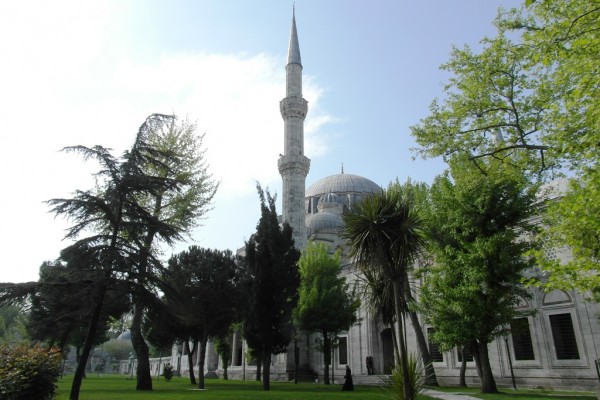It is impossible to understand the history of Istanbul or of Turkey as a whole without getting a good feel for the history of the Ottoman Empire – one of the largest and longest-lasting empires in history.
The Ottoman Empire peaked in the 16th and 17th centuries under the rule of Suleyman the Magnificent, with Constantinople (present-day Istanbul) as its capital. It was this era that provided the focus for my Ottoman Architecture tour with Context, led by docent Katie Johnson.
While the name of the tour referenced architecture, it was about much more than that – Katie masterfully wove in information about Ottoman history and the religion of Islam – facts that were crucial to understanding the stories behind the architecture we were seeing.

We started our tour at the Sehzade Mehmed Mosque, the first imperial mosque designed by renowned architect Sinan in 1548. Sinan was the court architect for three sultans – Suleyman the Magnificent, Selim II and Murat III. As Katie explained, the mosque was commissioned to honor Sehzade Mehmed, Suleyman’s eldest son by his only legal wife. In marrying, Suleyman broke with tradition and appointed Sehzade Mehmed to be his sole heir whereas in the past, all of a sultan’s sons would simply battle it out to take over after their father died. So while Sehzade Mehmed died at an early age, allegedly from smallpox, one may theorize that he was actually poisoned.
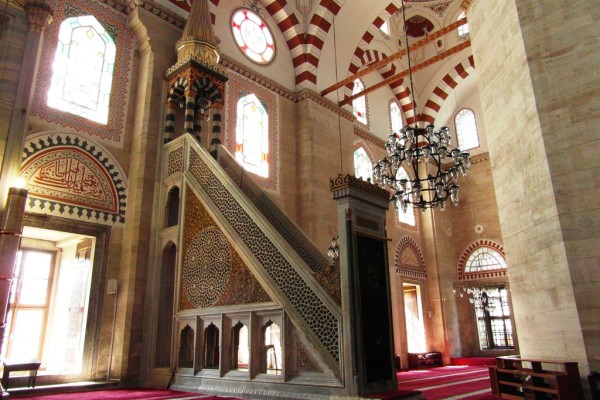
Katie also explained that Sinan was unhappy with the design of the Sehzade Mosque and considered it “imperfect” because the domes didn’t flow downwards in a continuous line. This was something he tried to fix in the next mosque we visited.
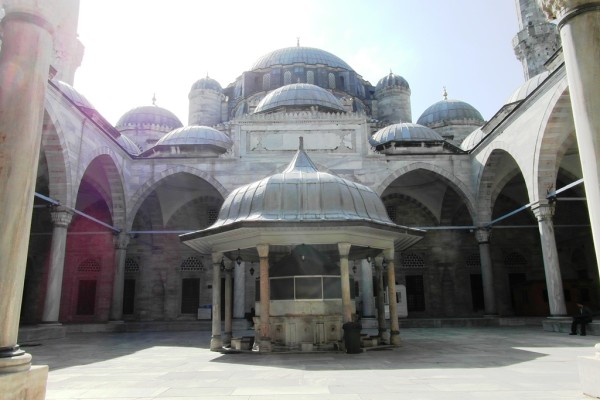
From the Sehzade Mosque, we made our way through the crowded streets of the Fatih district to the Suleymaniye Complex, widely regarded as architect Sinan’s greatest masterpiece. The complex consists of the mosque, a library, a large courtyard, a cemetery and what were once a soup kitchen, hotel, hospital and school. Complexes like this were a relatively new concept and served to form the center of surrounding neighborhoods, providing all necessary services for nearby residents, not just a place to worship.
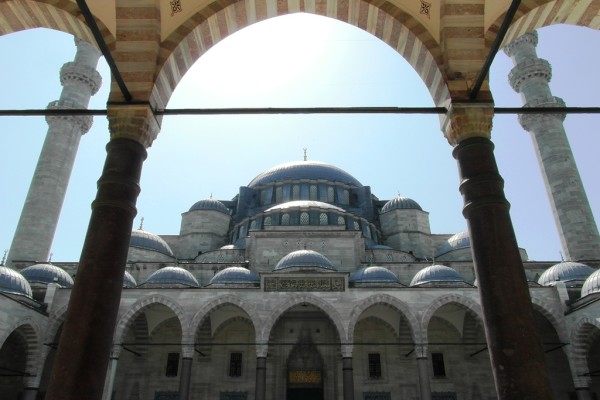
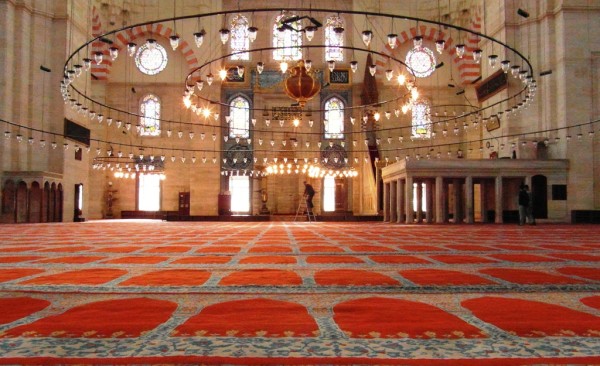
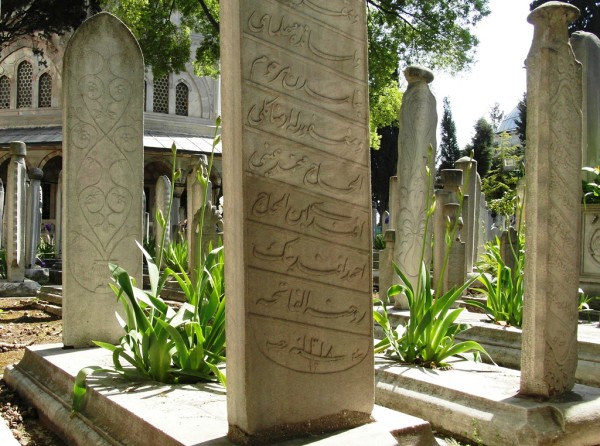
Not far from the Suleymaniye Complex we stopped at the tomb of the architect Sinan himself. He died in 1588 after designing more than 500 buildings throughout the Ottoman Empire.
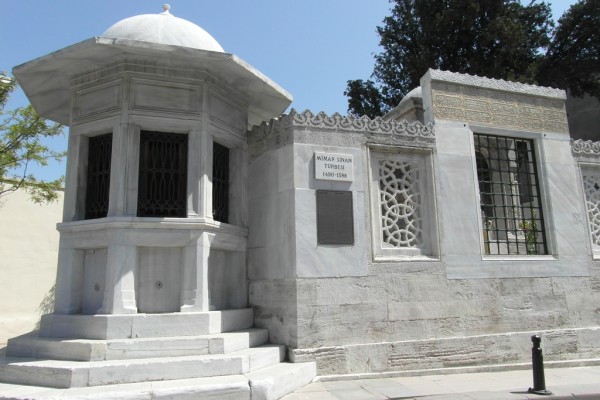
Our final stop was at the much smaller Rustem Pasa Mosque, somewhat hidden in plain view in the middle of a busy shopping area. Built in 1561, this mosque was yet another Sinan creation, this time for Grand Vizier Rustem Pasa, the husband of one of the daughters of Suleyman the Magnificent. The mosque itself is on the second story of the building meaning you could easily miss it if you aren’t looking for it (or staring up in the air). I personally liked this mosque the most because of the colorful Iznik tiles depicting geometric designs, tulips and carnations (I also learned that tulips were actually first cultivated in the Ottoman Empire – who knew?!).
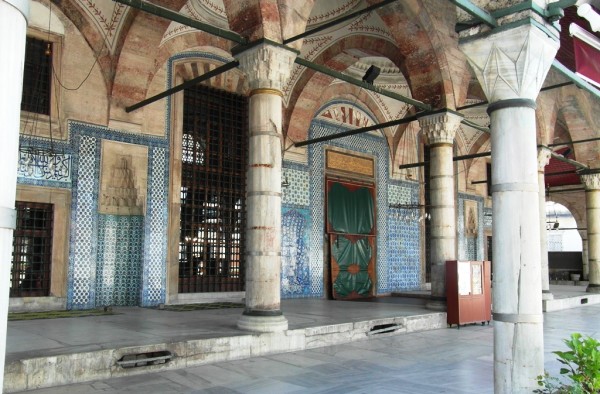
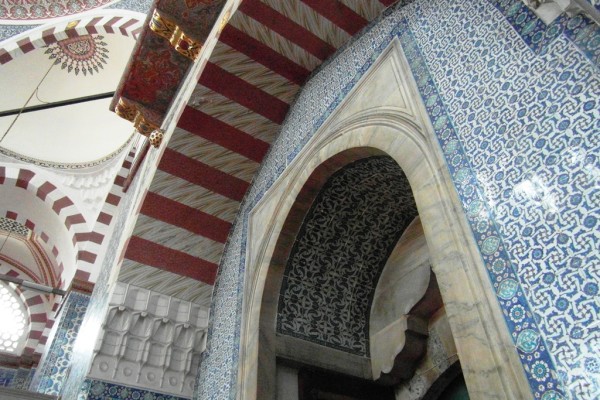
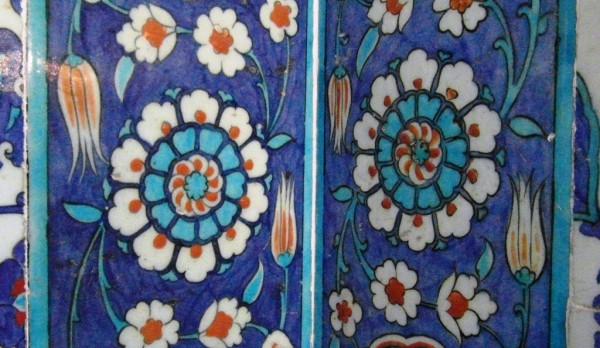
After three hours and three mosques, my brain was bursting with new information and I was wishing I had taken more notes. Context bills itself as providing “walking tours for the intellectually curious” and I would say that is right on. I may have only retained a fraction of what Katie explained, but I was riveted the entire time.
Thank you to Context for hosting me on this tour. All opinions expressed above are mine and mine alone

